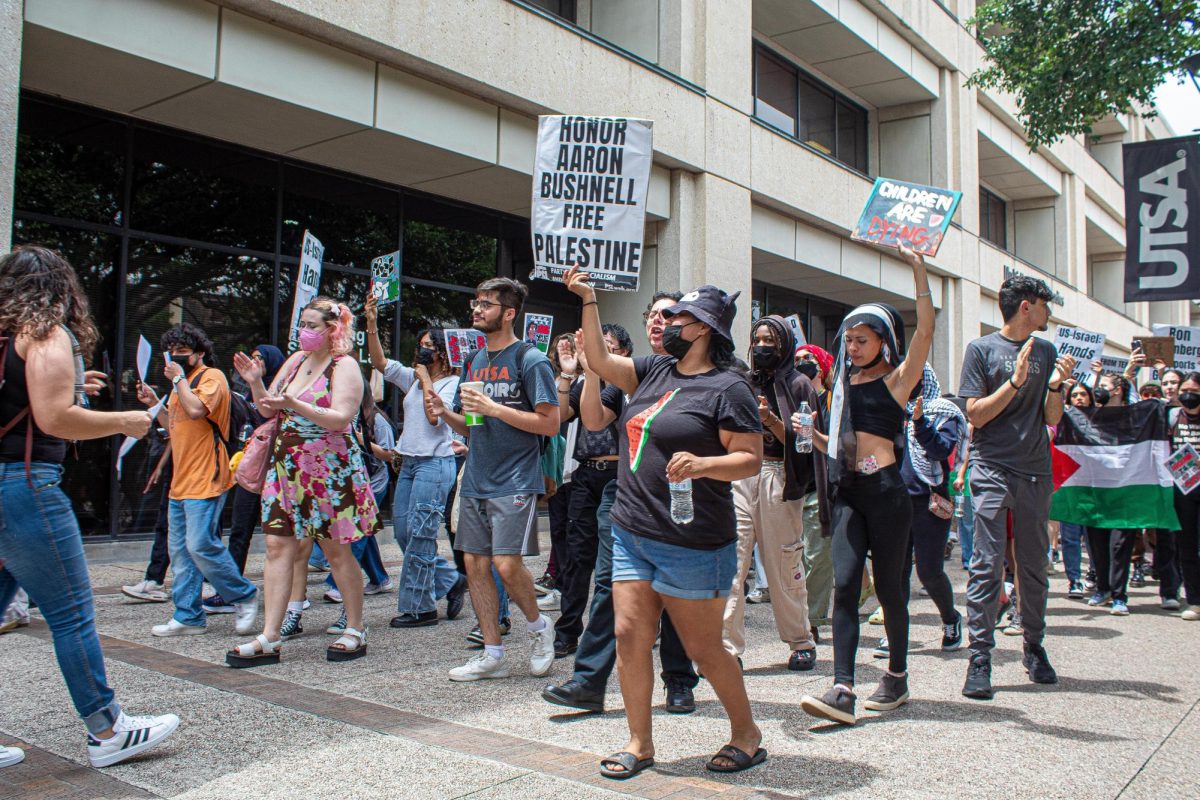

With construction underway and completion expected for the start of the 2005 fall semester, the new Biotechnology, Sciences and Engineering building (BSE) is hoping to set UTSA on the path to becoming a top-tier research institution.
The building, at more than 220,000 square feet will cost $83.7 million.
“Funding for the BSE building consists of Tuition Revenue Bonds, PUF allocations, gifts and grants,” Charles Lampe, director of facilities planning and development, stated.
The BSE is located adjacent to the Engineering building. “The BSE building consists of five levels including a sublevel with mechanical rooms, engineering labs, laboratory support facilities and specialized labs for biology and chemistry,” Lampe said.
Faculty offices for the departments of biology, chemistry, electrical engineering and civil and environmental engineering will occupy the first floor as will a food venue. The deans’ offices of the college of engineering and the college of sciences plus specialized biology and engineering labs are to reside on the second level, while the biology department will be housed entirely on the third floor.
Laboratories and support facilities for chemistry and engineering will be constructed on the top floor.
Access will be allowed at the main entrances to everyone because this will be a public building. Students may also eat at the bistro or visit the deans’ offices and other faculty offices.
Flexibility will be provided as research requirements change.
This addition to the 1604 campus will bring strong research groups to UTSA.
“It’s important to realize it’s not a building that builds a reputation; it’s the people you put into it,” Dr. Aaron Cassill, chair of the department of biology, stated.
Four cores of planned research to be studied by the biology department consist of plant biology, immunology, microbiology, developmental biology and computational neurobiology.
One study includes, “a collaborative group that will work on how our body defends against microbes, viruses and molds, things that can be used for bacterial warfare as well as things that cause common diseases,” Cassill said.
Additions needed to conduct experiments include a growth room for plants, high quality microscopes ranging from $300,000-$400,000, and computer modeling and sophisticated electrical measuring devices to evaluate what goes on inside the brain.
The laboratories will be designated a Biosafety level 1 or level 2 classification. Biosafety level 2 is defined as “exposure to infectious agents that can cause disease in humans, but whose potential for transmission is limited.”
Biosafety level 1, however is minor and research involves agents that do not normally cause human disease.
How hazardous is testing? “Within that facility there’s always some level of danger, people will be working with radioactivity, rats, mice, bacteria, and one that people don’t think about-the plant biology will work sometimes with things that can be harmful to crops,” Cassill said.
Precautions being taken will involve special security to keep the public out. There will also be a number of sterilizing chambers to kill off any harmful substances. A safety staff will also be working with researchers to make sure proper procedures are covered. Because animal testing will be taking place, there will be an on site care person and a veterinarian available at the UTSA Health Science Center. Research will be conducted mainly on rats and mice.
Two areas of study in the BSE will be behavioral testing and immunology. A state of the art vivarium, which consists of animal holding facilities and specialized cage wash equipment will house animals.
The BSE is expected to contribute tremendously to the research fields at UTSA. Studies will include treatments and vaccines that will help to block bioterrorism, prevent disease, lead to discoveries about birth defects, and to determine how early embryos develop and grow.
Brain studies, in collaboration with the Health Science Center, could aid in finding cures to Alzheimer’s and Parkinson’s disease.
“We’ve got amazing stuff happening,” Cassill said.











